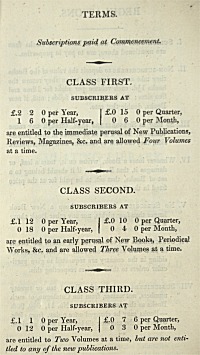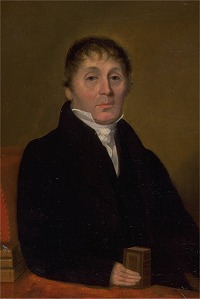Contents ![]() | Introduction
| Introduction ![]() | Institutes of learning
| Institutes of learning ![]()

Circulating libraries
Page 2 of 2 | Back
Robert Kinnear's Circulating Library, which may have been established in 1808, was based in Frederick Street. Customers could sign up for different options - for example, they could pay a lesser fee which would mean they weren't allowed to read any of the new books.

George A. Douglas's Circulating Library was based in South Castle Street around 1835. Customers had to pay a shilling for the catalogue as well as their subscription. A catalogue that belonged to a Lady Ruthven still survives and provides a lot of information about the library.
Some circulating libraries were themed, for example Stewart's Musical Circulating Library. Most of the owners were in the book trade: George Miller of Dunbar and Haddington and his brother John of Dunfermline are typical.

At the end of the 18th century George Miller was a printer, publisher and bookseller in Dunbar. He launched a circulating library in 1789. He printed a catalogue and prospectus to support it. By 1809 it was titled the Dunbar & County Circulating Library, although Miller moved it to Haddington in 1814. He was distracted by other schemes and the library failed in 1817. Other local circulating libraries followed but they had competition. By then both Haddington and Dunbar had subscription libraries. Samuel Brown launched the East Lothian Itinerating Libraries in 1817. In the 1820s mechanics' institutes opened technical libraries in both towns.
The Libraries Act removed the need for commercial libraries. Some lingered until the 1960s. Curiously, the growth of the Internet has regenerated the field. Specialist circulating libraries are available through the new medium.
Page 2 of 2 | Back
In this section:
Circulating libraries | Subscription libraries | Itinerating libraries | Free public libraries
Contents ![]() | Introduction
| Introduction ![]() | Institutes of learning
| Institutes of learning ![]()